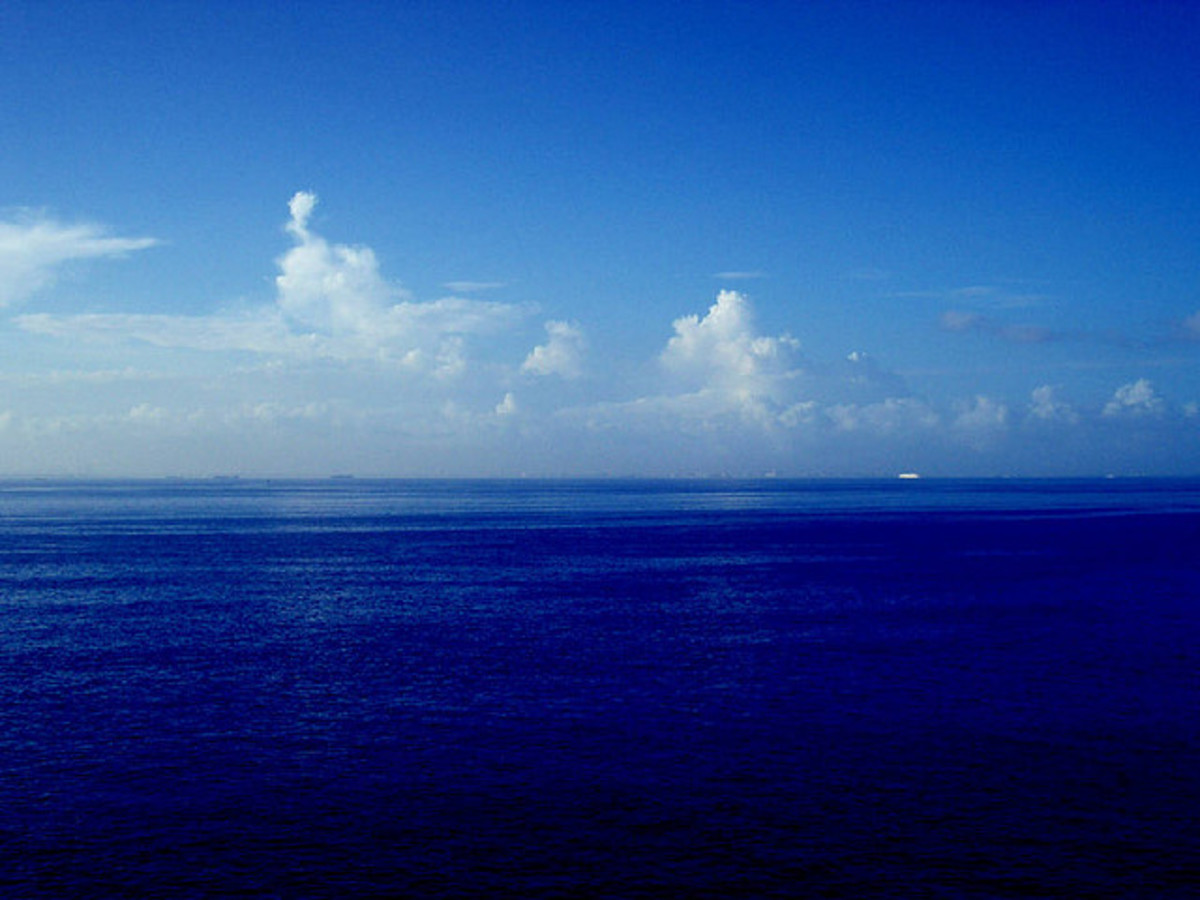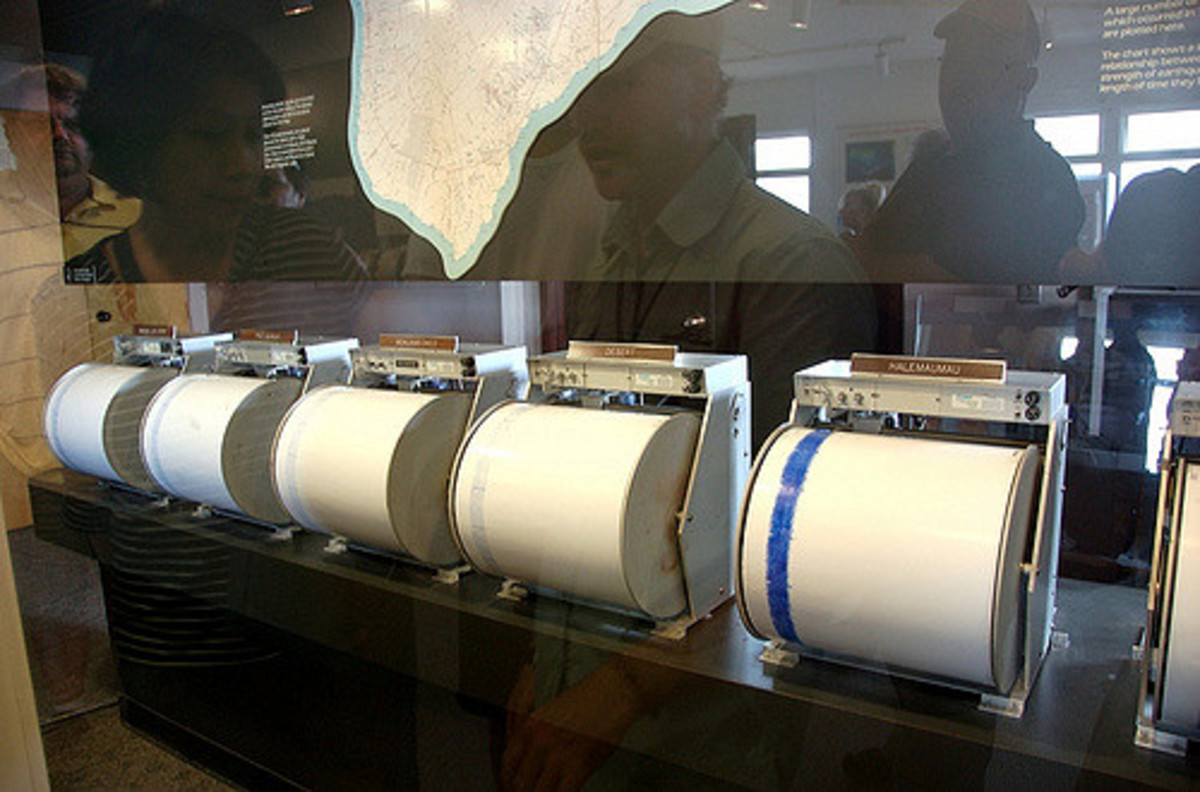How to Make a Simple Compass
Things Needed to Make a Simple Compass
- Sewing needle
- Small bar magnet
- Small piece of cork
- Small recipient (glass or plastic cup)
- Small metal screws, nuts and staples
Magnetized Stones (Lodestones)
A compass is an instrument that is used for orientation. It´s most commonly used for navigation on the ocean and in the air. Ancient civilizations used naturally magnetized stones, such as lodestons, as aids in ocean navigation. Compasses were known by the Chinese 2,500 years ago and Europeans used them in the 12th and 13th centuries. In the present, there are many distinct types of compasses, including the magnetic compass, the liquid compass, the gyro compass and the astrocompass, all of them use the magnetic pole as their point of reference.
Compasses are small and they can be found in sport stores. you can also make your own compass. A magnetic compass consists of a magnetized pointer such as a needle that points to the magnetic north pole. To make a simple compass, you can use some items around the house, such as a sewing needle a cork and a glass full of water, plus other items which you will probably also have at home. In the case you don´t have them at home, they can be conveniently purchased at any gift or hardware stores.
How to Magnetize a Sewing Needle?
Lay all the items on a flat table; hold the sewing needle with your left hand and the magnet with your right hand; rub the magnet over the needle about ten times in one direction; this procedure will magnetize the needle. Test the needle by picking up some small metal items, such as screws and nuts. You can place the needle into a box filled with small metal items and see what happens as the needle is displaced inside the box.
How to Magnetize a Piece of Metal?
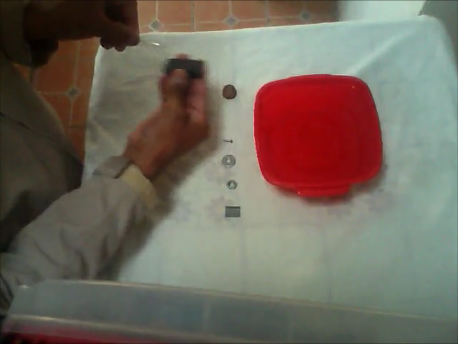
World´s latitudes
What is your location in the world?
Lay the piece of cork over the table and cut off a small fragment of it. Hold the small fragment of cork with your left hand´s index and thumb fingers, while holding the magnetized needle in your right hand; introduce the needle through the cork by pushing it carefully. If you find it hard to get the needle through the cork, once the point of the needle is inserted, push the other end of the needle gently against the table. This will help you get the needle through the cork. Make sure the needle is evenly distributed on both sides of the cork.
Inserting the Magnetized Needle Through a Piece of Cork
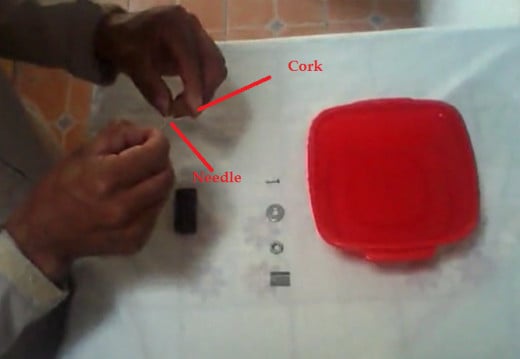
The Needle Should Point in the Direction of the Magnetic Pole
Fill the container (plastic cup or glass) with water to about ¾ quarters of its capacity; place the cork and needle in the very center of the surface of the water.
At this stage, the magnetized point of the needle should point in the direction of the magnetic pole (south or north); depending on the region of the world you live.
Now that you know how to magnetize a small metal object, you can try to magnetize other objects, such as screwdrivers, buttons, kitchen utensils, etc.. You will enjoy trying this technique on varied metalic objects. Have fun with it.
Tips
- Try to place the compass away from magnets or metal objects, as this can render the compass useless.
- The needle compass will always point to the magnetic pole (north or south).
- By knowing where the magnetic pole is, you can use the compass to locate other cardinal points (east, south, west, and north).
Needle Pointing to the North Pole
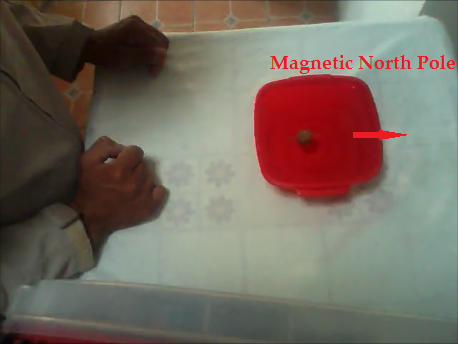
Facts About Compass
- The compass was invented in China during the Han Dynasty between 1900 and 2200 year ago.
- The first compasses were made of naturally magnetized stones (lodestone).
- The first compasses were used in the search for jewels and to select appropriate building sites for houses; subsequently, they were adapted for navigation in the 11th century, during the Song Dynasty.
- Soon after, compasses were made by magnetized needles with lodestone.
- The dry compass was invented in the 1300s.
- The liquid-filled compass was invented at the beginning of the 20th century.
© 2013 Jose Juan Gutierrez







